Kraków 2023-02-08
Krakow Zablocie train station.
Geographic coordinates: 50.048N 19.957E.
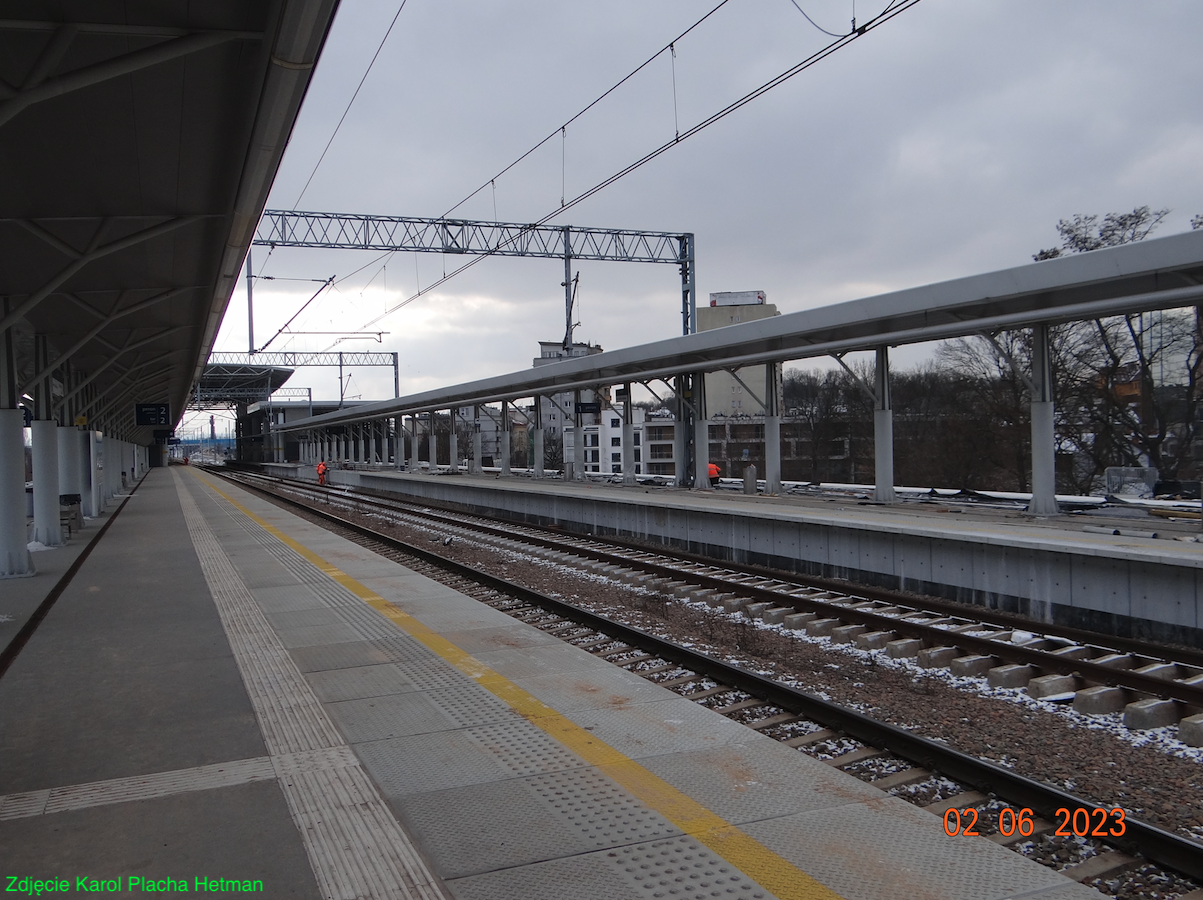
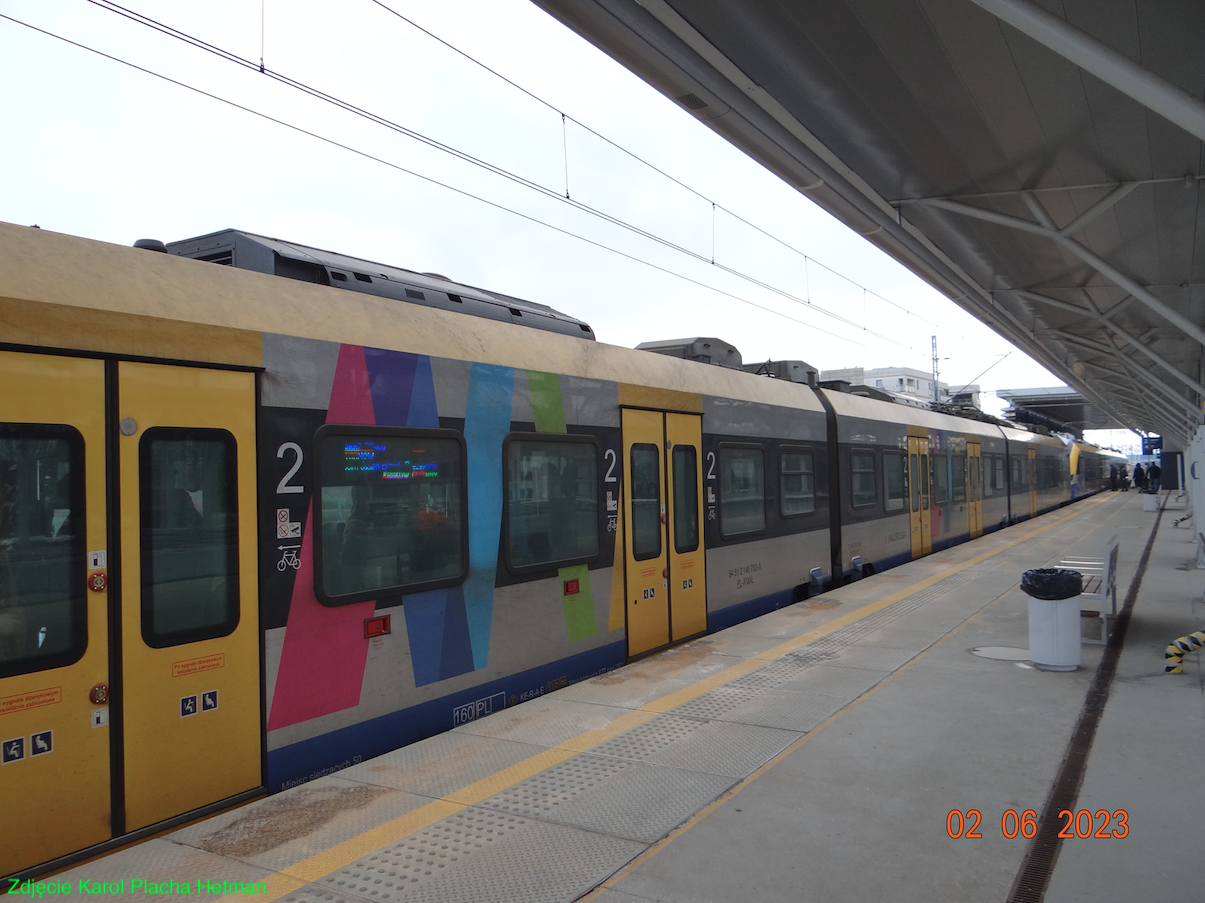

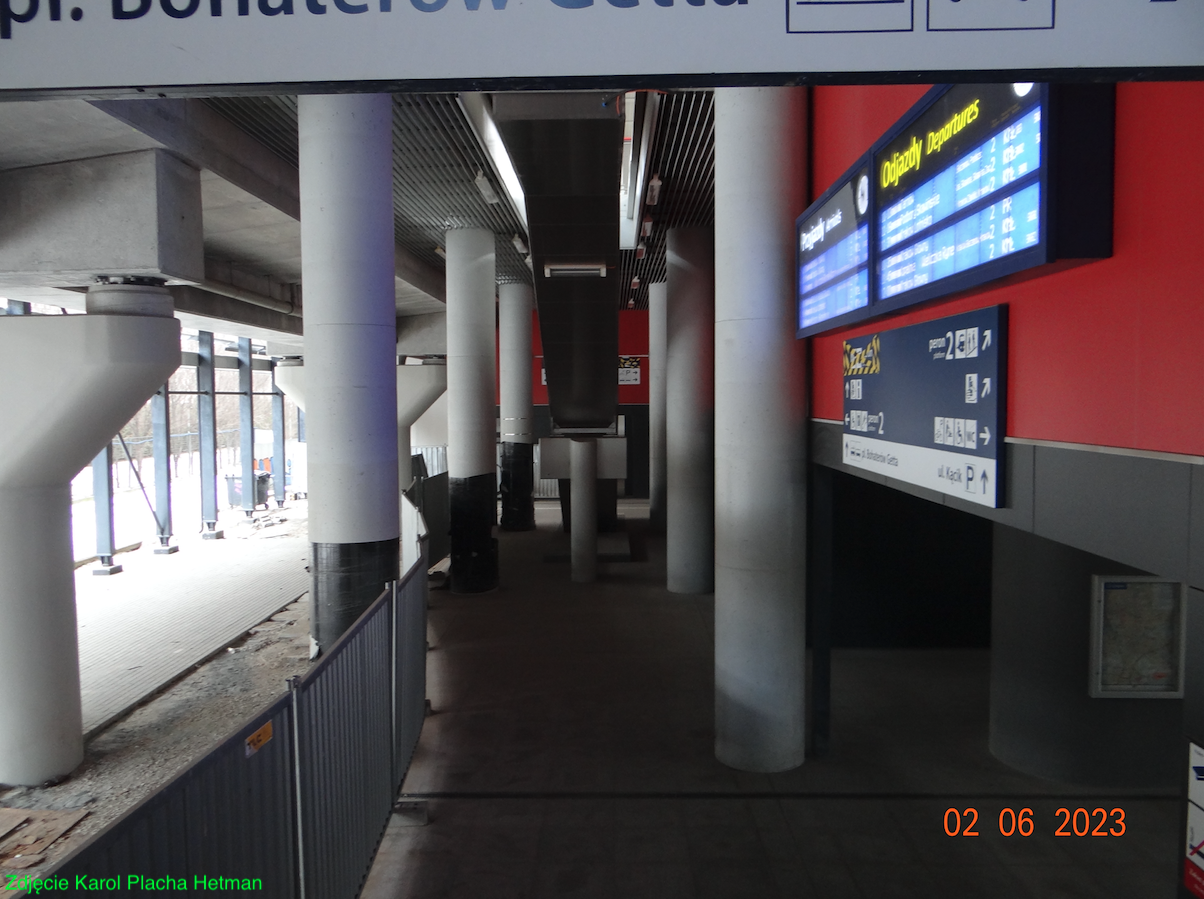
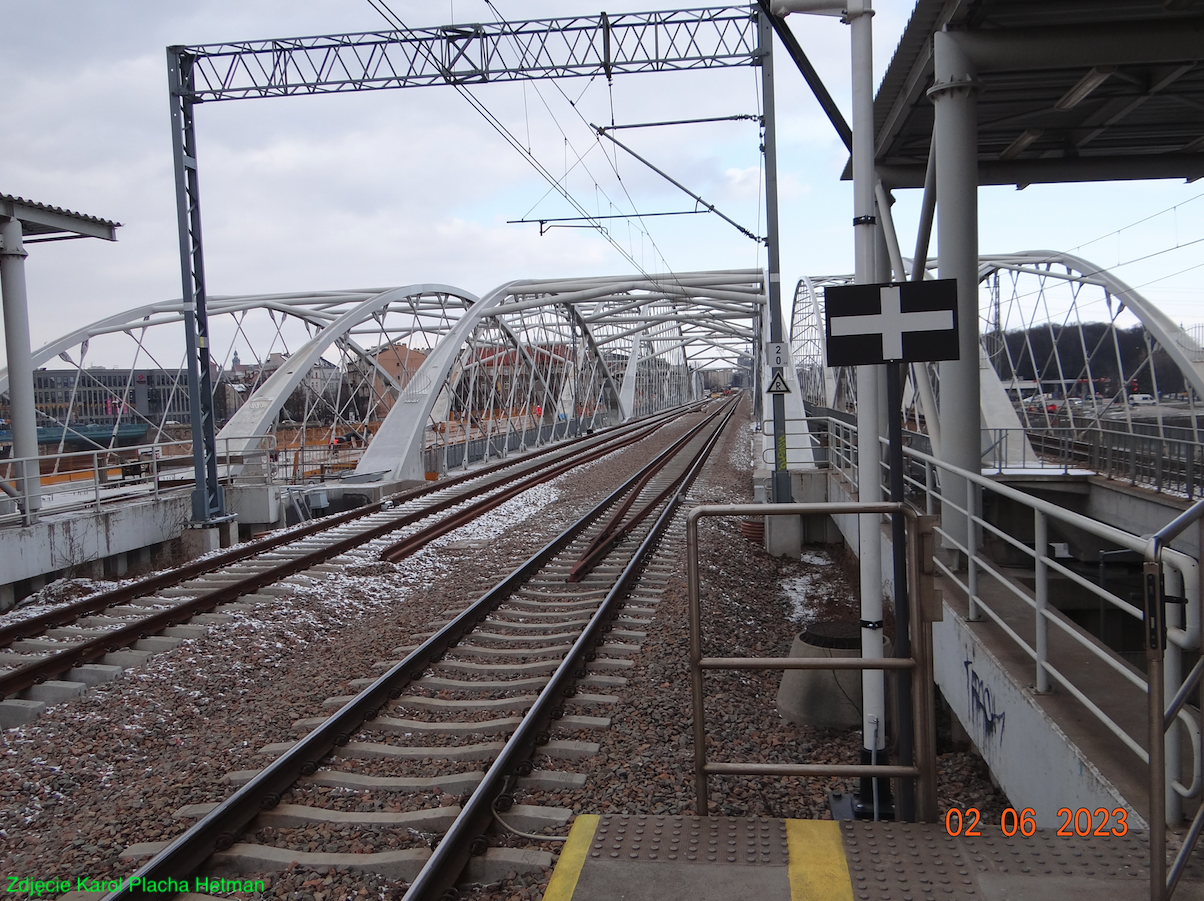
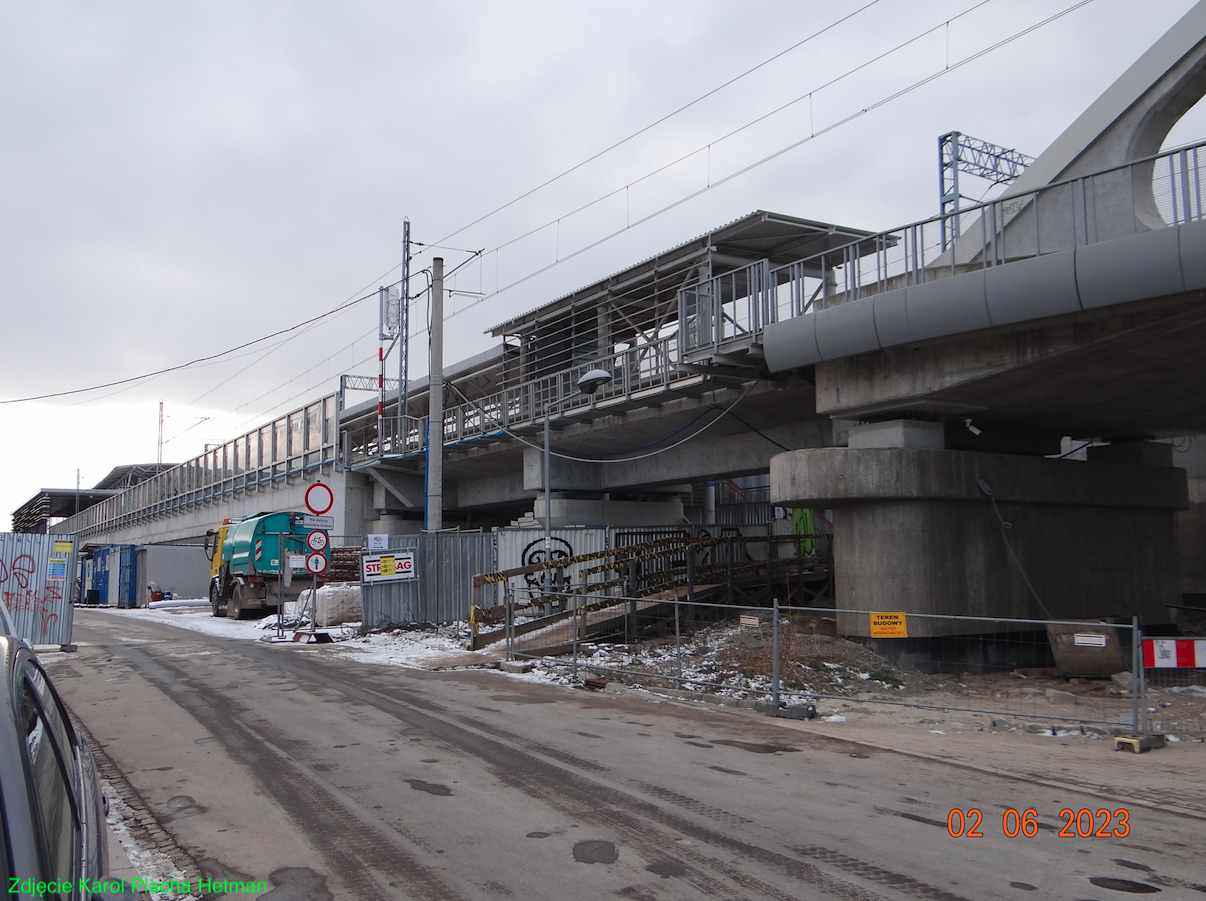
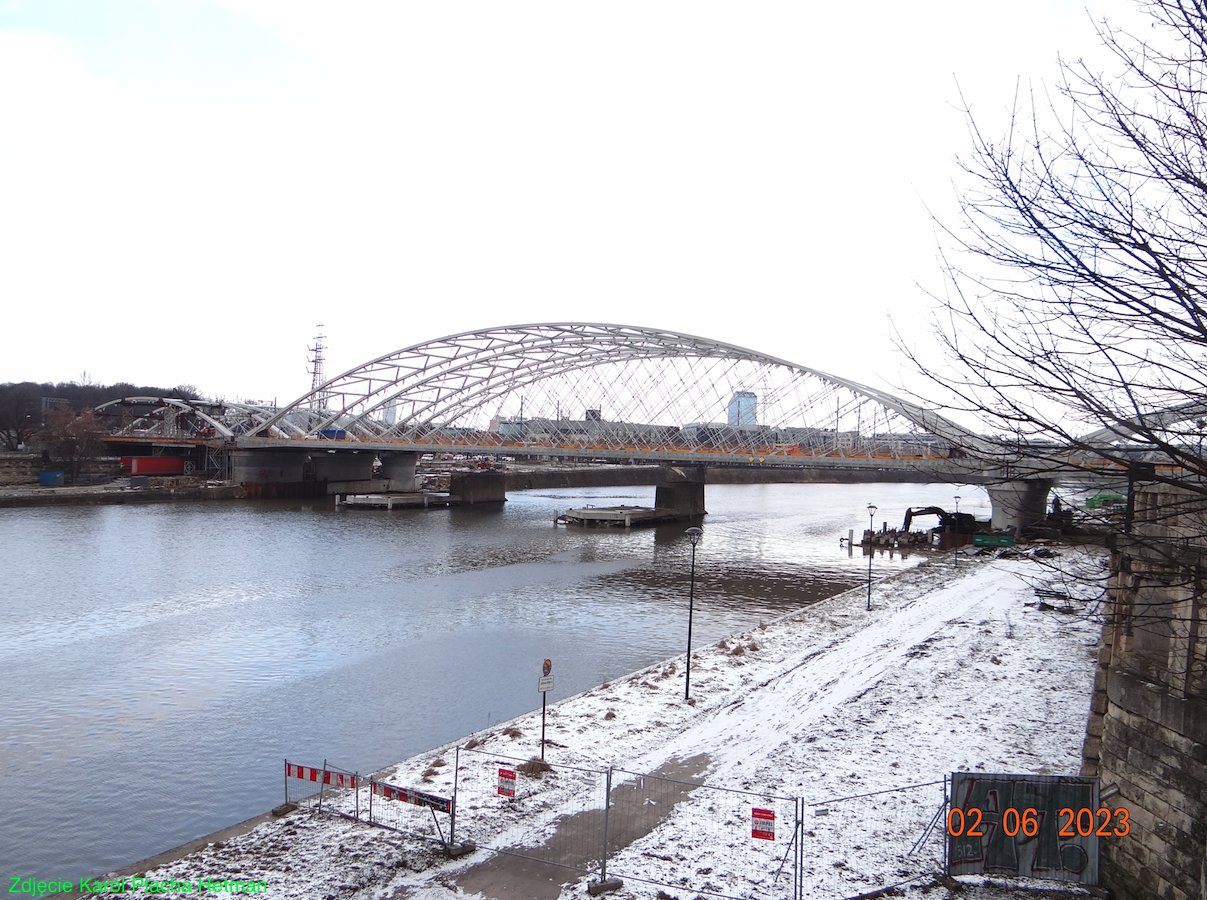
The Kraków Zabłocie railway station is located in the Podgórze district, on the right side of the Vistula River, in the so-called Zabłocie district. The name "Zabłocie" means the area located "behind the mud". In the 14th century, King Casimir the Great sold to the city of Kazimierz the village of Czyżowa, which was located in the area of modern Zabłocie. A port of goods was built in this village, which facilitated the trade in salt from the mine in Wieliczka. That is why the port was called "Port Salt".
In the mid-nineteenth century, the construction of a railway line from Kraków towards Tarnów contributed to the development of Zabłocie. The area became very attractive for industrialists. A meat processing plant, a mill, a brewery, a glassworks and others began to be established here. It got to the point that a railway station called "Wisła" was built right on the Vistula River. On the other side of the Vistula River there was a railway station called "Grzegórzki". The second station served nearby industrial plants, such as a meat processing plant, Zieleniewski's factory (later transformed into Szadkowski's plant) and passenger traffic to Kazimierza Wielka.
In the last years of the 19th century, railway plants, loading yards and warehouses were built in Zabłocie. The urban development area was gradually expanding. This was facilitated by the liberal Austrian system and lower tax and customs burdens.
In 1903, Podgórze was hit by a large flood, which, however, did not stop the economic development. New, better levees were created. In 1915, Zabłocie, along with Podgórze, was incorporated into the city of Krakow.
At the beginning of the 20th century, the following factories operated in Zabłocie: the Mesh, Furniture, Iron Structures and Ornamental Wrought Products Factory of Józef Gorecki (since 1890). Lazar Korngold's Iron Goods Industry (since 1897). Galvanizing Plant "Polcynk" (since 1925). Czesław Śmiechowski's Soap Factory (since 1913). The spirit industry plant "Wódki Krakowskie" (since 1919), then the Spirits Factory "Krakus". Małopolska Factory of Enamelware and Tin Products "Rekord" (since 1930), later Schindler's Factory. Cracow glassworks "Wawel" (since 1930). Wladyslaw Jankowski's Box Factory (since 1920). Match Factory "Znicz" (since 1922). Factory of Metal Products and Umbrella Mechanisms "Superior" (since 1930).
During the German occupation, 1939-1945, Zabłocie was the location of warehouses for aviation, artillery and communications equipment for war purposes. The Germans, using the slave labor of Poles and Polish Jews, in the taken over factories, produced: field kitchens, canteens, canteens, radiators for internal combustion engines and other small spare parts for cars, planes and radio stations.
After World War II, the district continued to develop industrially. More workplaces were established: Zakłady Elektroniczne Telpod - Unitra, then Telpod S.A. (functioning from 1946 to 2002). A large part of the production of electronic components went to the needs of the army. From 1950, the "Miraculum" cosmetics factory operated in Zabłocie. The Institute of Glass and Ceramics was established at the glassworks.
In 1952, a bridge was built over the Vistula River in Łęg, which improved communication between Zabłocie and Nowa Huta, which was being built at that time. In 2001, the Kotlarski Bridge was built, connecting Zabłocie with Grzegórzki. In 2010, in the place of the first bridge over the Vistula, which connected Kazimierz with Podgórze, a pedestrian and bicycle footbridge was built, which received the name Father Bernatka Footbridge.
The main streets of the district were Lipowa, Kącik, Zabłocie and Jana Dekerta. Since 1991, Zabłocie has been part of Podgórze as District XIII. Zabłocie is bordered by the Vistula River from the north, Stoczniowców Street from the east, Powstańców Wielkopolskich Avenue from the south, and Krakusa Street from the west.
In 1989, as a result of economic and political changes, many plants were closed. The area has become attractive to developers who have built housing estates with over 700 flats and apartments in place of the demolished factory buildings. It happened in the period 2013 - 2019. In the period 2018 - 2019, the building of the former "Miraculum" factory was transformed into a new office building.
PKP Krakow Zablocie.
A large number of industrial plants, where thousands of people worked, made it necessary to facilitate their commuting to work. The railway line No. 91 Kraków Główny - Medyka was a convenient destination for a passenger stop here. Until now, Kącik Street and Lipowa Street were connected with each other by a pedestrian tunnel in the railway embankment. Therefore, in this place, stairs leading to the new railway platforms were designated. The platforms stretched towards Zabłocie Street and the Wisła River. Stairs to Zabłocie Street were also made at the other end of the platforms. The stop was opened in 1979. Local trains stopped at the stop. These were mainly EN57 EMUs.
There were two single-edge platforms. The platforms are decorated very modestly. On each of them, three bus shelters were installed, which protected travelers against rain and strong sun. Waste bins and railway information in cabinets were installed. Street lighting has been installed. Benches have not been installed. Platform 1 was on the west side and Platform 2 was on the east side.
In the period 2015 - 2018, a complete reconstruction of the Kraków Zabłocie passenger stop was carried out. A significant part of the railway embankment was dismantled from the side of Lipowa Street. In its place, under the track, commercial and service areas have been arranged. Architectural barriers for people with disabilities have been removed. Escalators and lifts leading to the platforms were installed. The platforms were completely rebuilt. They have been raised and covered. An audio railway information system, electronic boards and display cases with railway information were installed. There are benches and litter bins on the platforms. As before, you can leave the platforms towards Lipowa Street and towards Zabłocie Street. The platforms are 200 m long.
In the period 2019 - 2023, another extension of the Kraków Zabłocie railway stop was made. It was related to the launch of the program of reconstruction of the so-called "Diameter Line", from a two-track system to a four-track system. Two local rail tracks and two long-distance train tracks. In addition, Kraków received the long-awaited railway link No. 624 Kraków Zabłocie - Kraków Bonarka, which contributed to an increase in the number of trains from Skawina to Kraków Główny. It is worth mentioning that freight trains have not run through Kraków Główny station for many decades. Freight trains are directed through the ring road - Kraków Olsza station.
As a result of the works, the platforms became double-edged. On their outer side, one track was added. In theory, it looked simple. However, in reality the changes were very large. First of all, the tracks and electric traction were replaced. Now long-distance trains on the Kraków Płaszów - Kraków Główny section run at a speed of 100 km/h. Previously it was 40 - 60 km/h. The lower part of the station was also expanded. Ticket machines for agglomeration trains were installed there.
Written by Karol Placha Hetman
